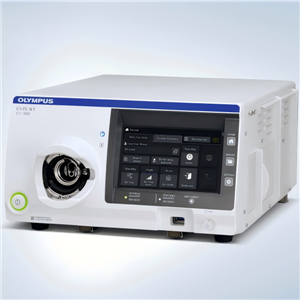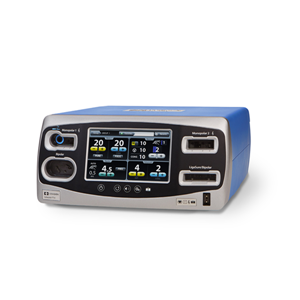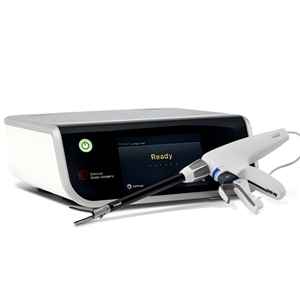Barriers to adopting intracorporeal anastomosis in colorectal procedures amongst Australian general surgeons
Abstract
Introduction
Minimally invasive colonic anastomosis can be performed intracorporeally or extracorporeally with laparoscopic or robotic assistance. In colorectal surgery, choosing the optimal approach is still controversial. Mainly, the debate involves balancing the potential benefits of intracorporeal anastomosis (ICA) with increased technical difficultly with the more straightforward and widely accepted extracorporeal anastomosis (ECA). Both techniques require different skill sets, and this study aims to identify barriers that prevent adoption of ICA.
Methods
A 31-point questionnaire survey was distributed through the General Surgeons Australia (GSA) platform of active general surgeon in Australia. It was open for 2 months between July and August 2023. Statistical analysis was completed using descriptive analysis and logistic regression.
Results
Forty-three general surgeons completed the survey. ECA was the most performed and preferred surgical technique. It was identified that increased operative time is the biggest barrier to completing ICA followed by lack of training and no perceived benefit with ICA. Patient comorbidities did not result in choosing ICA over ECA; however, surgeons with less experience and volume in colorectal surgery were more likely complete ECA in operations with increased technical difficulty.
Conclusion
Although ECA is the go-to technique for many Australian general surgeons, it is evident that they may be overlooking the benefits offered by ICA. Further training is required to improve operative times and confidence in the technique. Ongoing research, audits of existing techniques, and updated training will assist surgeons becoming acquainted with the latest evidence and to offer the best care to their patients.
Since the adoption of laparoscopic surgery in colorectal surgery, there have been significant improvements to patient outcomes. These include earlier return of bowel function, lower analgesia requirements, and shorter stay in hospital, while still maintaining equivalent oncological outcomes. Minimally invasive ileocolic and colonic anastomosis can be performed intracorporeally or extracorporeally with laparoscopic or robotic assistance. There is still debate between the optimal approach and which minimally invasive surgical technique provides maximal benefit in colorectal surgery. Mainly, debate is around the balance of the potential benefits of intracorporeal anastomosis (ICA) with the increased technical difficulty that may limit its widespread acceptance in the surgical community. Extracorporal anastomosis (ECA) involves the surgeon mobilizing bowel through laparoscopic or robotic techniques and exteriorising mobilized bowel in order to complete the anastomosis using standard open techniques. Here, there is a theoretical decrease in the risk of intra-abdominal spillage of colonic contents as the anastomosis occurs outside the abdominal cavity. However, ECA anastomosis requires significantly more bowel and mesentery to be mobilized and can be challenging with an increased risk of traction injury to bowel and mesentery. On the contrary, in ICA, mobilizing bowel, vascular control of the pedicle, resection, and bowel anastomosis occurs inside the peritoneal cavity. Therefore, since the colon does not require exteriorization, the amount of bowel that needs to be mobilized is much less which is associated with less mesenteric traction or twisting. Additionally, this also means that the surgical incision is not influenced by limits in mobilizing the bowel, as it remains in situ and only needs large enough to remove the resected specimen. However, ICA is a more technically challenging surgery. Advanced laparoscopic techniques including laparoscopic suturing and knot tying are required, resulting in potentially increased operative times and cognitive demands. As enterotomies for anastomosis are created intra-abdominally, there is an increased theoretical risk of exposing the peritoneum to intraluminal contents. However, risk of spillage can be minimized through routine full bowel preparation, although, this may in turn increase preoperative fluid losses. With the introduction of ICA in colorectal surgery, there were initially concerns regarding oncological outcomes. In particular, it was suggested that malignant cell dissemination may occur when opening the intestinal tract within the abdomen resulting in peritoneal recurrence through leaked contents as well as inadequate lymph node harvesting.It has been subsequently determined that both ECA and ICA have similar rates of lymph nodes harvested and retrieved enough nodes to ensure a radical cure. Additionally, studies have determined that there is comparable 3- and 5-year overall survival and disease-free survival between ICA and ECA in right and left hemicolectomy, with similar rates of peritoneal seeding found on follow-up. Hence, both ICA and ECA offer equivalent oncological outcomes in the short- and medium-term with large long-term studies still ongoing. The purpose of this study is to identify perceived challenges associated with performing ICA that may limit its uptake. Secondary outcomes are to identify characteristics of surgeons who have higher rates of utilizing ICA. Ethics approval was granted by The University of Sydney Human Research and Ethics Committee in accordance with the National Statement on Ethical Conduct in Human Research, 2007 (National Health and Medical Research Council) (Approval no: 2022/904). Each participant had consented to participate in the study prior to completion of the survey. The study examined active general surgeons performing colorectal procedures in Australia through a cross-sectional analysis. It was a survey-based study, completed in line with CHERRIES (Checklist for Reporting Results of Internet E-Surveys) Guidelines (See Supplementary ). The inclusion criteria were general surgeons who have completed their fellowship in General Surgery, working in Australia and perform colorectal procedures. Retired general surgeons and general surgeons who do not perform any colorectal procedures were excluded from this study. The survey is described in Supplementary . The survey collected demographic data including sex, age, location, experience, fellowship training, and colorectal data. The survey asked surgeons to identify barriers to adopting ICA and preferences for technique. The survey collected patient, tumor, and surgical factors that would influence the decision to perform ECA over ICA. The respondents were asked to rate these factors through a 5-point Likert scale ranging from extremely unlikely to extremely likely, as was previously conducted in the MERCY study. In this study, all 960 active members of General Surgeons Australia (GSA) were invited to participate in the survey through email. The data for the study was collected and managed using REDCap (Research Electronic Data Capture) tools hosted by at The University of Sydney. REDCap is a secure, web-based software platform designed to support data capture for research studies, providing (1) an intuitive interface for validated data capture; (2) audit trails for tracking data manipulation and export procedures; (3) automated export procedures for seamless data downloads to common statistical packages; and (4) procedures for data integration and interoperability with external sources. Participation in the survey was voluntary, and participants were not incentivized to complete the survey. The survey was open from July 6, 2023 to September 5, 2023. GSA full financial members were emailed on July 6, 2023, with a second follow-up email sent on August 3, 2023. Statistical analysis was completed using SPSS 28 for Mac (IBM Corp., Armonk, NY, USA). Descriptive statistics were utilized to describe demographical data. Binomial logistical regression was performed to identify factors predicting preference for ECA over ICA in colorectal anastomosis. Predictors which were included in the model were age, annual volume of colorectal-specific procedures, principal place of practice (rurality compared with metropolitan), fellowship training status (fellowship training status compared with colorectal fellows), and years of practice since fellowship completion (experience compared with surgeons who have been consultants for greater than 5 years). Among this sample of Australian general surgeons, ECA was the most preferred and commonly performed surgical technique for colorectal anastomosis. These findings contrast results from the MERCY study where 72% of senior surgeons favored ICA. As expected, surgeons with higher colorectal volume preferred ICA, likely due to increased familiarity with the technique. Notably, regional surgeons showed a higher preference for ICA over their metropolitan counterparts, likely skewed by higher participation from regional surgeons with specific interests in colorectal surgery. The clear preference for ECA compared with ICA among general surgeons in this sample likely arises due to misconceptions in patient outcomes with ICA techniques. In a meta-analysis of existing studies comparing ICA and ECA in right hemicolectomy, van Oostendorp et al demonstrated ICA was associated with decreased short-term morbidity. Subgroup analysis of studies completed after 2012 showed that statistically significant decrease in short-term morbidity as well as decreased length of stay time by 0.77 days (95% CI = −1.17 to −0.37) when using ICA. In addition, there was a decreased rate of surgical site infections with ICA techniques while maintaining similar rates of anastomotic leakage rates. Similarly, Rausa et al network meta-analysis of randomized-control trials and controlled clinical trials further showed that rates of postoperative complications following laparoscopic ICA and robotic ICA showed lower rates of postoperative complications when compared with open and laparoscopic ECA techniques. Furthermore, they also demonstrated similar length of hospital stay between robotic and laparoscopic ICA and significantly decreased length of hospital stay with robotic hemicolectomy when compared with laparoscopic ECA and open techniques. When only comparing robotic ICA and ECA, there was no difference between hospital admission lengths and overall complication rate, and yet, ICA was still took longer to complete. Robotic procedures differ from laparoscopic procedures by providing increased articulation and 3-dimensional (3D) visualization. Operative time in right-hemicolectomies with ICA has been shown to be completed faster with 3D laparoscopy compared with robotic, with similar patient outcomes, suggesting that additional benefits arise due to improved visualization of tissue planes through 3D rather than increased articulation, which has also been demonstrated in other surgical procedures. Subsequently, studies published after these meta-analysis show similar results. The MERCY study (2022) was able to demonstrate decreased surgical site infections, time to regular diet, and estimated intraoperative blood loss while maintaining similar mortality and readmission rates. Similarly, the MIRCAST study (2023), a prospective cohort study, was able to demonstrate ICA was associated with lower overall complication as an independent factors when compared with ECA in right hemicolectomy (OR: 0.64; p-value = .001). Hence, there appears to be significant evidence that ICA offers improved short-term outcomes when compared with ICA. The main barrier toward adopting ICA was the perceived increased operative time due to increased technical difficulty in performing ICA. Although increased operative time has been shown to likely lead to endogenous and exogenous infections in surgery, ICA techniques have in fact shown decreased surgical site infections. Additionally, with increased experience with ICA, there is a significant improvement in operative time, comparable to ECA. Although, it has been shown that ECA techniques are performed 13 min faster in the MERCY study and 30 min faster in the MIRCAST study when compared with ICA. Ultimately, although ICA is technically more challenging and can result in longer operative times, studies indicates that once surgeons progress through the learning curve, the time taken for ICA procedures can be equivalent to ECA. This study showed that it was mainly surgical factors that affected decision-making process for choosing ECA over ICA. Patient frailty or factors that would be perceived to increased operative difficult would result in those with less surgical experience and colorectal experience choose ECA over ICA. In the prospective cohort MIRCAST study, it was seen that ECA was completed more often in American Society of Anaesthesiologists (ASA) III and IV patients, suggesting that surgeons preferred to complete ECA on patient who appeared to be more unwell. Similarly, in the MERCY retrospective cohort study, there was an increased incidence of comorbidities in the ECA group compared with ICA.However, there appears to be similar rates in performing ECA and ICA in patients with previous abdominal surgery, previous abdominal disease, mechanical bowel preparation, body mass index (BMI), and age. Therefore, it is not likely that these factors would affect decision making in choosing surgical technique. Additionally, rates of ECA and ICA were similar across tumor size, nodal involvement, tumor invasion, suggesting these did not affect decision-making process. Therefore, future cohort studies should aim to control for comorbidities, ASA, extensive adherences, extended lymphadenectomy, multiple visceral resections, and emergency cases to ensure appropriate comparison between ICA and ECA techniques. The Pfannenstiel incision emerged as the favored site of extraction and has been previously shown as the ideal site for specimen extraction due to the lowest rate of incisional hernia compared to other sites.Suprapubic sites and peri-umbilical sites were subsequently the next two most common extraction sites identified in this study. However, den Hartog et al's meta-analysis comparing common extraction sites in minimally invasive colorectal procedures demonstrated that nonmidline sites of extraction had significantly fewer incidence of incisional hernia compared with midline sites, without any difference in surgical site infection rates and Pfannenstiel remaining the superior choice in terms of decreased rate extraction site incisional hernia. Although, specimen extraction site can be influenced by a number of factors including anatomical limitations, surgeons' preference, and adherences near site. Ultimately, the choice of extraction site can be influenced by several factors, but it is clear that alignment with evidence-based recommendations is needed. A limitation of this study includes the small sample size. This is inherently difficult to solve in an unincentivized email study of surgeons who would be required to volunteer their time to be involved. Therefore, respondent bias may influence results, whereby, those who have particularly strong views or interest in the topic are more likely to respond. Additionally, of the invited surgeons, it would be difficult to determine the proportion that did not meet the inclusion criteria; that is, general surgeons who do not complete colorectal procedures were invited to complete the survey. Therefore, the true response rate would be expected to be higher. A further limitation of this study is that 88.4% of respondents self-reported fewer than 50 colorectal procedures per year, and it is unclear why there was a high proportion of surgeons who were less experienced with colorectal procedures who responded. However, this assisted in identifying which barriers surgeons with less experience consider when adopting ICA. Similarly, this study has a high number of participants who do not favor ICA, which would provide significant insight into which factors affect decision making when choosing operative technique. Ultimately, within this study sample of Australian general surgeons, there was a preference toward ECA techniques in colorectal surgery, despite the benefits that ICA offers. Identified barriers included increased operative time, no perceived differences in patient outcomes, and decreased operative experience. Audits of surgical technique should be completed to ensure practice is in line with updated evidence of surgical technique and ensure ongoing professional development.1 INTRODUCTION
2 MATERIALS AND METHODS
2.1 Ethics and consent
2.2 Participants and survey
2.3 Statistical analysis
3 DISCUSSION
4 CONCLUSION




